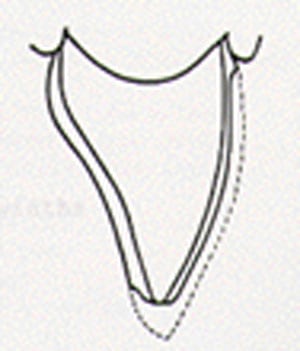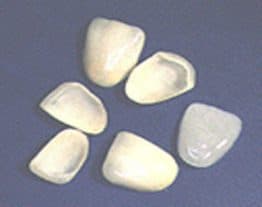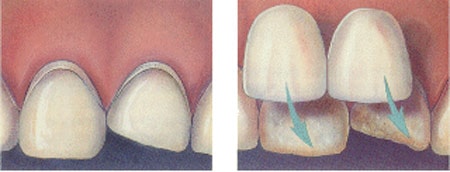What is the procedure of dental veneers?
A well-trained cosmetic dentist understands that the first step in designing a whole new smile for you is listening. The dentist needs to take some time to understand you, how you feel about your smile, the personality you want to project, and how much you want to spend.
The cosmetic dentist will also take into account your facial shape, hair color, and complexion. He or she will then create a smile design for you based on all this information. After that communication step, they get down to work.
Before any successful smile makeover, however, your teeth and gums need to be in good health. In particular, if your gums are inflamed, that problem may need to be addressed first. If your gums tend to bleed, for example, it will be difficult to get an exact impression of your prepared teeth and difficult to isolate the teeth for proper bonding procedures.
This means that you need to have a regular dental cleaning and follow through with good home care. In cases of serious gum disease, more advanced procedures may be necessary.

When are porcelain veneers recommended?
Usually, any problem that has to do with the cosmetic appearance of your teeth can be addressed with veneers. Dentists can easily make adjustments to the color, shape, and length of your teeth as well as the gaps in-between. Particularly, dental veneers may help with:
- Worn out, chipped, or broken teeth
- Stained or discolored teeth
- Uneven or misshaped teeth
- Wide gaps between teeth
First veneer appointment
The most widely used technique for placing porcelain veneers involves some tooth preparation. Your teeth are prepared by removing a small amount of the front surface of the tooth (about 0.3 to 0.5 millimeters – the thickness of a fingernail) to allow space for the porcelain.
Then the dentist takes an impression of your teeth. This impression is used by the laboratory technician to create your veneers.
After your teeth are prepared and before the veneers are placed, the teeth will feel rough and somewhat strange. Usually, the dentist will place temporary veneers on your teeth, but this isn’t always necessary. In most cases, the appearance of the prepared teeth is nearly normal, especially at conversational distance.
If you don’t have temporary veneers, simply keep your teeth well-brushed, because they may tend to stain more easily at this time. They will also be extra sensitive to air and cold. A coating placed on the teeth can minimize this sensitivity.
Some cosmetic dentists will sometimes use what is called a no-preparation technique. Sometimes this is because the patient is apprehensive. Sometimes it may be that the nature of your case makes it so that tooth preparation isn’t required. But be careful.
Successfully using a no-preparation technique requires more skill on the part of the dentist and the laboratory, not less. And veneers placed with a no-preparation technique will have a slight ridge where the veneer meets the tooth, rather than a flush and perfectly smooth transition.

It is critical to keep the gums healthy at this time. If they are puffy, they will tend to bleed easily during the bonding of the veneers, which will contaminate the bond, making it impossible to bond them correctly. Floss thoroughly, every night. If you notice any bleeding in the gums, floss more frequently.
Porcelain veneers, to be done right, need to be made at a dental laboratory that dedicates itself to producing high-quality cosmetic work. Ordinary dental labs simply don’t have the expertise and talent to produce these works of art. Photographs and models may be sent to help them achieve an artistic result that will be customized to your personality and that maximizes your facial attractiveness.
The Try-In
One difference we have noticed between serious cosmetic dentists and dentists who just dabble in cosmetic dentistry is the importance they attach to the try-in of your new smile. Serious cosmetic dentists will stock try-in pastes and will make sure you get an excellent opportunity to see how the porcelain veneers look in your mouth before permanently bonding.
The fit of the porcelain is also checked at this time. If you have any reservations about how they look, the serious cosmetic dentist will have the veneers sent back to the laboratory and re-made, if necessary, to meet your expectations. Another try-in will be scheduled until your smile looks just right.

Take a good look. It is important that you are certain during the try-in that the veneers meet your expectations. All changes except for shortening and minor trimming need to be accomplished during the try-in phase.
Once the veneers are bonded on, major modifications will require grinding off the veneers and re-doing the entire case from the beginning. It would be unfair to expect the dentist to do this for free.
Bonding the Porcelain Veneers

Bonding involves an elaborate series of steps that bond the veneer to the tooth. These bonding procedures are not fully taught in dental schools. Additionally, bonding technology keeps changing with newer materials and techniques.
This is another of the reasons that a dentist, to do this well, needs to be dedicated to extensive education beyond dental school. The end result is a durable, beautiful restoration that will last for years, even decades, and acts like it is a part of your tooth.
What are the drawbacks of dental veneers?
Besides advantages such as improving cosmetic problems and bringing a naturally bright smile, porcelain veneers come with certain drawbacks such as:
- Porcelain veneers are more expensive than those made from resin composite.
- Porcelain veneers can’t be fixed if they are chipped or cracked. Thus, they are quite high maintenance.
- When you get veneers, the enamel layer is removed. As a result, your teeth may become more sensitive to foods, hot and cold beverages.
- In some cases, the veneers may have a different color from that of your real teeth, which is quite difficult to fix.
- Although this is rare, it’s possible for veneers to peel off and fall out. To lower your risk, don’t bite your nails or pens, or chew ice cubes and other hard items.
- After getting veneers, you can still have cavities. So, if possible, you should completely cover your teeth with dental crowns.
- Veneers aren’t a good choice for those with bad dental health (having cavities or gum disease), weak teeth, or insufficient enamel on the tooth surface.
How long do veneers last?
Porcelain veneers may last around 7-15 years. After this time frame, you will need to replace them.
How to take care of dental veneers?
How long the veneers last depends a lot on how well you and your dental office take care of them.
Porcelain veneers are not designed to withstand sharp impacts and can fracture, just as your natural teeth can fracture. Do not bite pins, nails, bottles, etc., and do not strike them with hard objects. If you engage in contact sports, wear a mouth protector.
Do you have other questions about porcelain veneers or are you looking for an expert cosmetic dentist? We maintain a list of cosmetic dentists who are screened for proper training in cosmetic dentistry. Take care of veneers at home:
- Brush and floss faithfully. Keeping them clean is your best insurance.
- Avoid frequent snacking, which promotes tooth decay.
- Protect them by not biting metal objects, and by wearing a mouthguard for contact sports.
- Vibrating sonic toothbrushes are excellent for caring for porcelain veneers. Some people get confused because we warn against the use of ultrasonic scalers, and they think that warning applies to sonic toothbrushes. But ultrasonic scalers have metal tips that vibrate at ultrasonic speeds. Their problem is that they can nick the margins of porcelain veneers and dental bonding. Sonic toothbrushes, on the other hand, have soft bristles that vibrate, and their effect is to clean and polish the veneers or bonding.
Services
Working Time
- Monday - Friday: 08:00 - 19:00
- Saturday: 08:00 - 18:00
- Sunday closed
Contact Info
- Hotline 1: (+84) 908 321 455
- Hotline 2: (+84) 931 857 885
- Mobile: (+84) 8 3925 8778
- Phone: (+84)2 838 258 778
- info@dentalrose.net
- rosedentalclinicvn@gmail.com
 English
English  Tiếng Việt
Tiếng Việt

